Today's post is a lengthy retrospective on the Lego company's product developments for Lego Space, notably, through Futuron. If a new 1987 part appeared in Futuron in its second year, or third, I'm ignoring it, as it would be old by that point. Only parts, colors, and prints that Futuron helped introduce will be considered. I'm hedging a bit on the last wave of Classic Space and Black-tron because they did introduce some of these same parts a few months ahead of Futuron, but depending on country, the dates get a bit screwy and honestly, it's 1987, I'm more concerned with the year; rather than the season. So, with that said, let's explore another era.
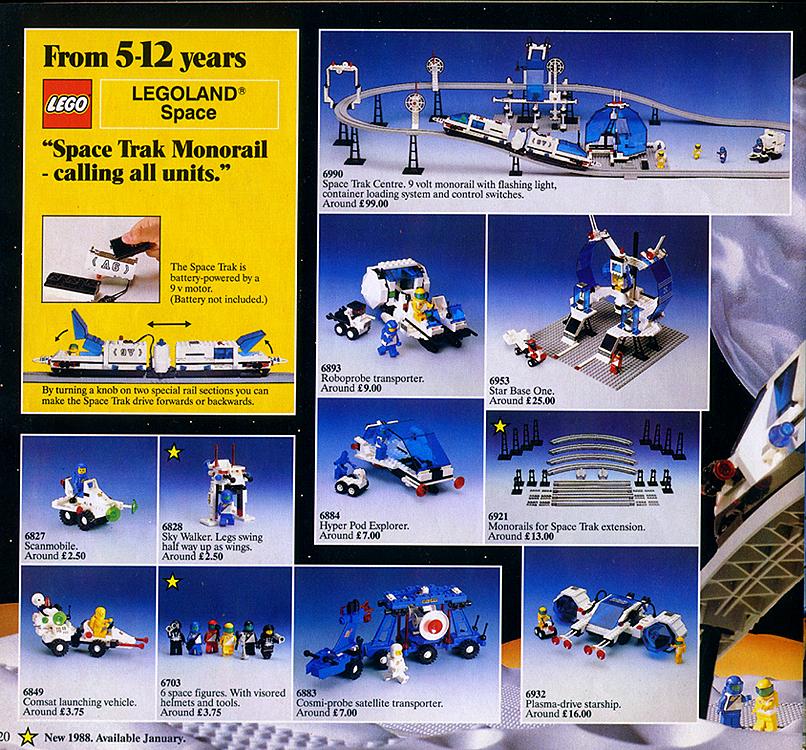
Given my ongoing appreciation for all things new, I wanted to make the old seem new again, and reignite the excitement of discovery from the old pamphlets. These are lists by year for various parts from Futuron that were new molds from 1987-1988. By 1989 Futuron sets were only repeating themselves; the advancements were appearing elsewhere.
First up; here's where the real changes became immediately obvious.
It was a new era for Lego Space, the open helmets gave way to visors and a new modern helmet design. The design was so successful that it continues to appear in new Lego sets circa 2014.
1987

1987

1987
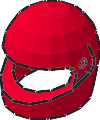
Black and white helmets would enter the Futuron range after appearing elsewhere in the Lego company's product line.
1988

1989

The new visor was a cool upgrade for spacemen, and while I may have some nostalgia for the old Classic Space helmets, I can't deny that this new part was a serious improvement. As a kid, I lost a significant number of these in the town color's sky blue...

The Hinge system that appeared in 1981 received two new elements.
A new control arm was created to combine with the hinge system that appeared in 1981. This part would become a popular element for Lego motorboat engines until its passing in 2004; amidst the click hinge takeover.

A new middle hinge plate expanded the options available for hinge connections.
1988

Futuron received the black variant in 1989, but it wasn't a new color.

The traditional wall hinge brick received a new plate version. This is the bottom eyelet.
1987

1987

Additionally, the top pin plate for the wall hinge was made. The new sleeker hinge design allowed for trimmed down functions to be added to ever more ornately compact creations.
1987

1987

And here is the completed assembly of the hinge plate.
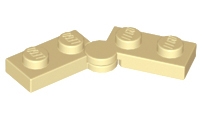
A new handlebar window headrest thingamabob was introduced in 1987 and appeared in a pair of Classic Space sets, a pair of Black-Tron spaceships, and a Futuron set.
1987

Futuron received a white version in 1988
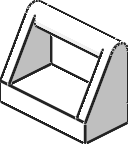
The bar fence was introduced in Futuron's second year. This was one of my favorite parts as a kid, I had one from a fire station, I always used it like a fence, but two of the three Futuron sets, with the bar, made good on its design possibilities by mounting headlamps to them and building them in sideways.
1988
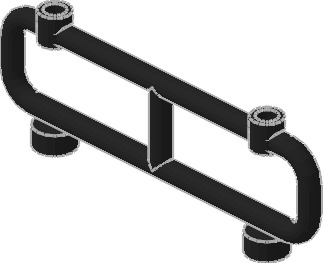
1988

Here is the car headlamp and grille mounting bracket. This is one of those universal parts that proved very useful and continues to be a regular item in Lego sets.
1987

1987

This is another bracket which was never common, and is currently out of production.
1987
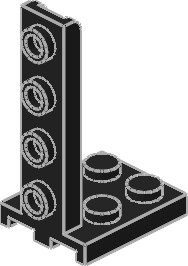
1987

This upside down 75 degree slope was opposite to an older style of slope that had first appeared in 1978, unlike the older, right side up, slope brick this new design had a tube system in the straight edge to allow for innovative new connections.

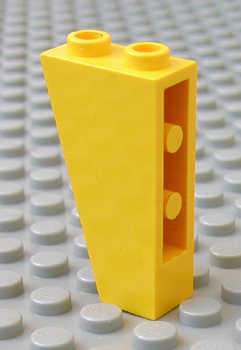
In 1988 A 45 degree corner brick joined the plates and added a useful addition to the 45 degree castle wall corners that had appeared in 1986 before becoming plentiful in 87.
The new shape allowed kids to streamline their creations by rounding off castle walls and fuselages.
1988
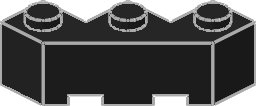
1988

Here's the very ordinary corner brick that had to have been new at some point. Honestly, I'm surprised this piece wasn't older, that's how banal it's become. But in 1987, it must have been revolutionary.
1987.

1987
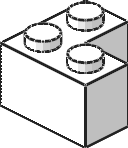
Likewise plate versions of the corner mold were introduced.
1987, though black wouldn't appear in Futuron until 1988.
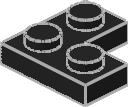
1987

A New plate mold was introduced to accompany the large dome windows which are shown below.
The Lego company had begun to move away from strictly 90 degree angles by 1986, but in 1987, they unleashed several new molds with the 45 degree corners. This plate was the largest 45 degree plate produced.
1987

The 45 degree plate invasion included this part, which was designed to coexist with the castle walls from 1986. It could be a wing, or a streamlined corner, it's a very useful plate.
1987
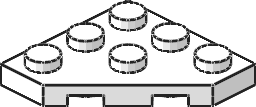
A half octagon plate was also released for the 45 degree design update. The transparent blue version was an awesome early example that sadly never went on to further production.
1987

1987
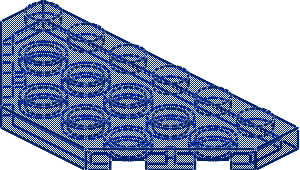
A new hinge clip design was released to coincide with a new window mold. This continued the development of cornerless bricks. This part was only ever released in black and after 1996 it vanished never to be seen again. To me, this part represented the Lego company's ongoing vision to create round canopies.
1987
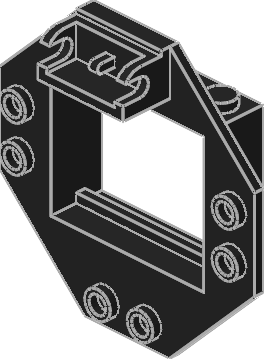
The Humble 1x4 Tile was a wonderful addition, the 6990 Monorail was the sole Futuron set to obtain this piece through the theme's 3 year run, and in its first year of release only one other space set contained it; 6972 Polaris 1 Spacelab, making the final Classic Space Station the only Classic Space set to contain this otherwise unremarkable piece. I think that's remarkable.
1987
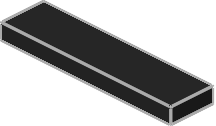
1987

The following Technic Plate appeared in 1987 and added some new dynamic connection options for wheels and segmented spacecraft, among other techniques. It continues to be utilized in the modern Lego part list. In its first year of release it was only available in the color white and only appeared in one set; Futuron's 6893 Galactic Starship
1988
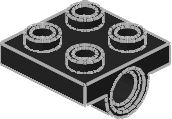
1987

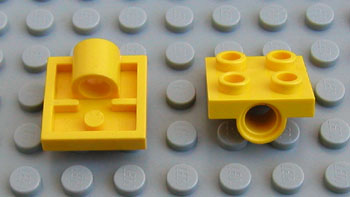
A new 1x2 brick with technic pin was released to coexist alonside the previous 2x2 design
1988
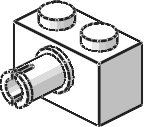
Futuron was Host to a wide array of new Space windows, including this delightful piece which never managed to be common, but it still managed to survive through 2000, when Arctic gave it a nice little sendoff in 6575 Polar Base.
1987
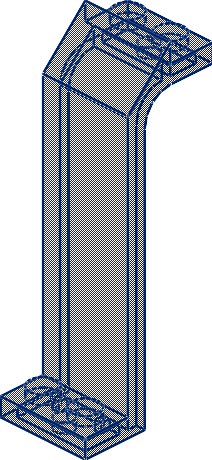
This white version turned out to be an exclusive to 6990.
1987

The octagon canopy was released, and saw duty in the last wave of Classic Space sets as it paved the way forward to ever more rounded designs. In this initial design it lacked the crossaxle hole that would appear in 1994. It is the only canopy ever designed to fit part #3937.
1987
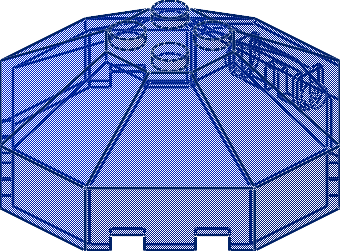
1987

The Cockpit extender was a nice addition, it doesn't hold much purpose by itself, but combined with another window it can be very handy. No two sets ever shared the same color and after 2001 the part went away as the Lego company phased out the older sleek hinges in favor of click hinges.
Therefore this color variant is an exclusive from 6990.
1987
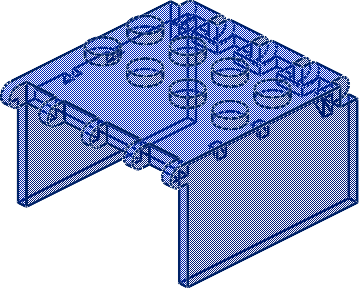
Futuron's windows made a big impression equal to the furor caused by the Monorail. The order of the day seemed to be go big or go home. These are the smaller Big panel windows. I always needed these as a kid, just because. As a grown up I find them too large to be very practicable, but such is the way of these things.
1987

This print was exclusive to 6953
1987
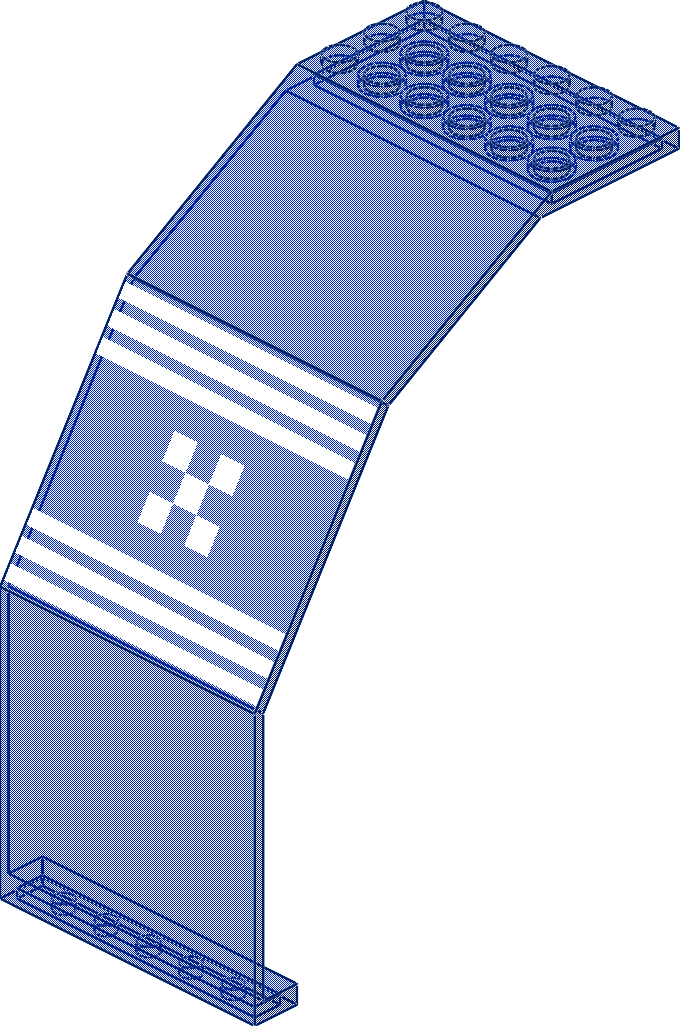
Here is the unique print from 6932
1987

The most epic window part introduced by Futuron was this piece, these windows truly were space dome ready. The sheer size of the part restricts its practical application in building projects, but if you build big enough they are very eye catching.
1987
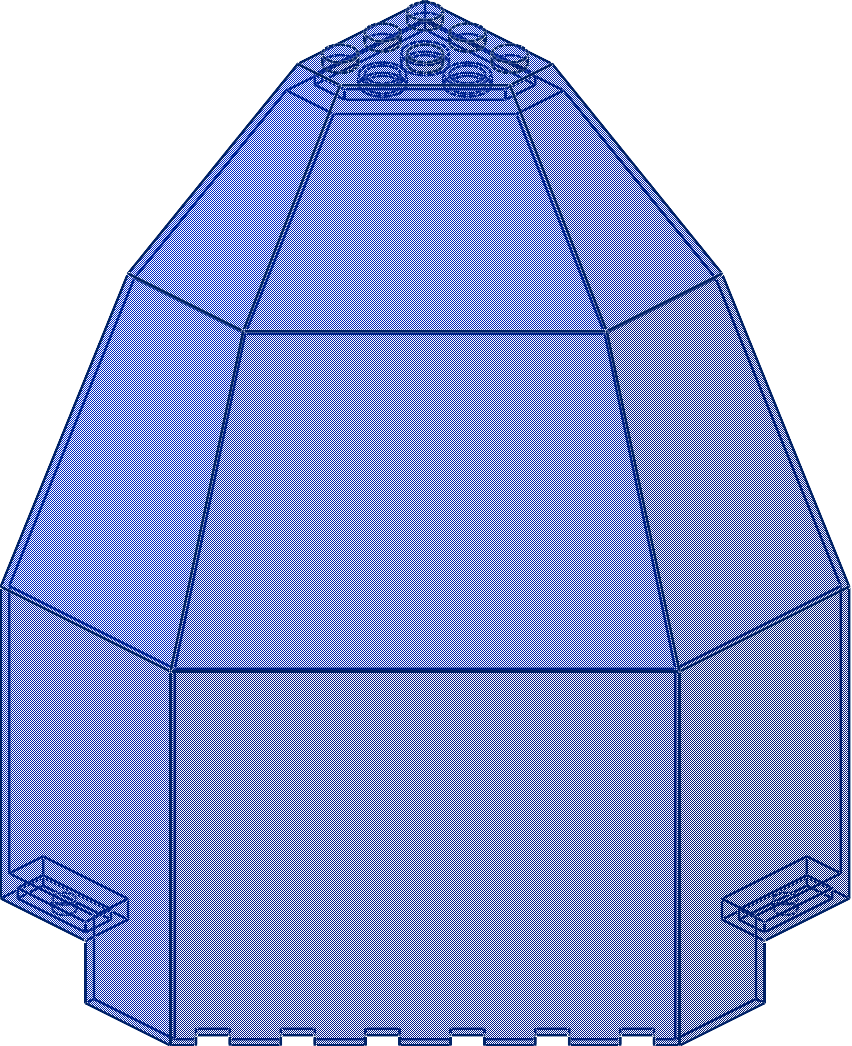
The Second wave of Futuron sets expanded canopy options in new ways, taking advantage of the 45 degree craze sweeping through Lego at the time, this magnificent half dome wall/canopy was one of the 45 degree design scheme's most exciting updates, because it helped spawn off an additional Prefab Space wall craze comparable to the Castle Prefab wall craze. Thanks to the Lego Dacta Space set's saturation of these this part wasn't terribly rare in Transparent dark blue, but most of the other colors appeared in only one or two sets. As with the octagon canopy noted above, this window also further advanced the Lego company's vision of perfectly round canopies. They weren't there yet, but the idea was already developing and the polygonal results were charming.
1988

The Prefab walls I speak of include this delightful corner wall piece which matched up exactly with the quarter canopy above. This part wasn't ever common, and like with another Futuron derived Canopy noted above, it dissappeared after one last appearance in the 2000 Arctic theme's 6575 Polar Base. Man, you have got to love that Arctic theme, it was good for some classic parts.
6395 Victory Lap Raceway contained 10 of these in white, and could be called essential if you wanted a lot of these as a kid; it's also widely considered to be the best Lego Racing set ever made.
1988

Rounding out the new selection of Space Prefab Walls, we have this narrow canopy, which was 'the' space window when I was a kid. Every kid's collection had to have some of these, it was the piece, and at one point it was new just like everything else.
1988
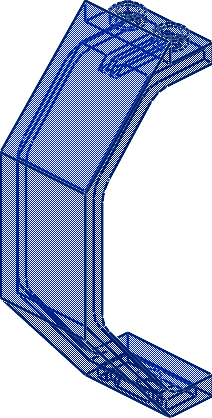
In 1989 a printed variant was added in white, this was also released the following year in the 9355 Dacta Space set...which is the set with the highest concentration of Space prefab walls. 27 prefab walls and windows across three prefab wall types.
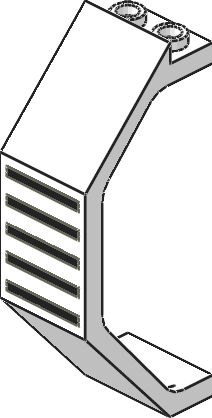
A rack and pinion system was developed to allow for new innovative play options involving moving space station windows and lifts.
1987
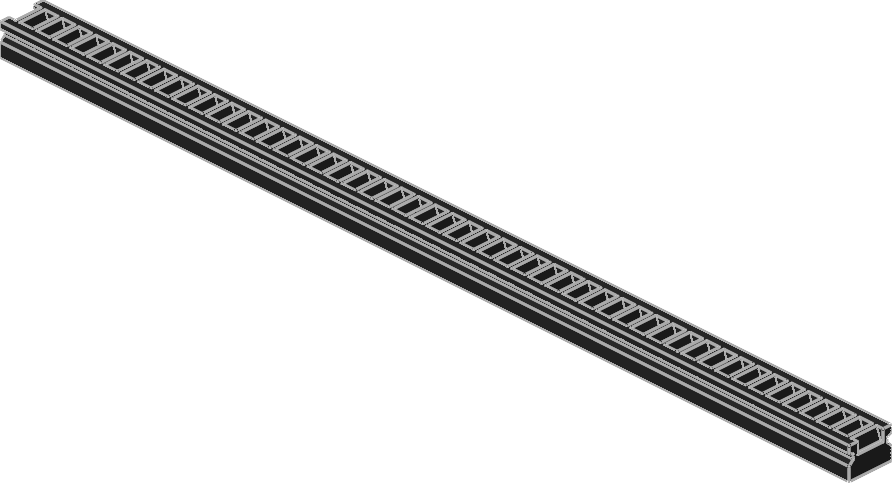
1987

The new gear boxes had two guide directions to allow the inner gear to slide the rack across.
1987

1987

All the gear boxes contained this little pin and gear in black throughout the production cycle.
1987

Technically the part isn't supposed to be removed, so the complete assembly of the gear box looks like this.
1987

I've cordoned off the last new bits because they go a long way towards showing how many parts had to be developed for the Monorail to work.
This is the underpinning of the Monorail Train, it would see very limited use through 1994.
The raised studs contain a technic stud hole to allow coupling with the wheel bogey, which rides under the gap in the base. The tail at the back slips into the Motor's moveable clips.
1987

Here is the wheel bogey for the base of the train. Metal Pins hold the wheels and the technic half pin is on clips allowing the bogey to incline and decline on slopes.
1987
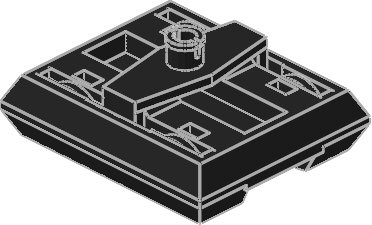
The Monorail Motor was released in three sets and only ever came in white. The switch in the base is operated by adjusting the track switch piece further down the list. It contains a toothed metal gear which spins alongside the track teeth for movement. Only one side of the Motor has electrical conducting studs. Finally, the couplings on either side of the motor can incline and decline to allow the train to go up and down the track. Note: The couplings on 6990's Motor were available on 1988's replacement Motor, (See the curved black hinge on either side) but newer versions of the motor from the Airport Shuttle and Monorail Transport Base had longer couplings; don't ask me why.
1987
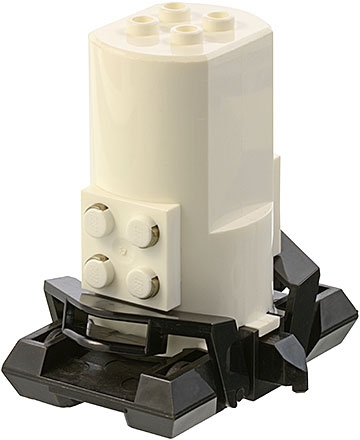
The infamous 1 plate thick 6990 electric wire was notorious for snapping and subsequently received a redesign which appeared in later copies of 6990
1987
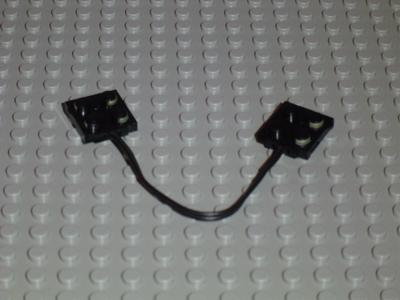
This is the redesigned part.
1987
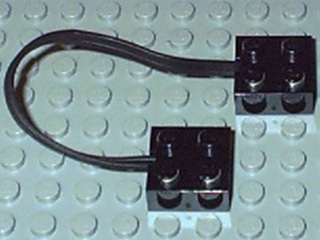
Here's 6990's illustrious 9V battery box. This print was new for 1987 and subsequently it was the only non stickered design to ever grace a 9V box. Now, I'm sure if you've visited the Bricklink, Peeron, and Brickset listings and seen all the 9V sets you might ask, "But wait, didn't this piece come out in 85 or 86?" I've been investigating that because no one gives the same date, but in regards to that question, check the images below this box for dates of release for the supposed '85 and '86 sets
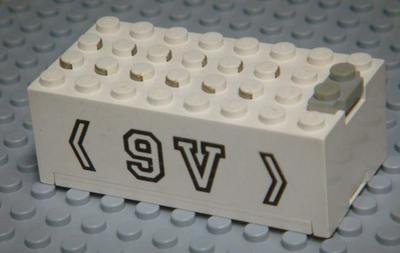
'86, stickered box
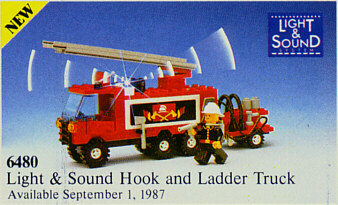
'86, stickered box
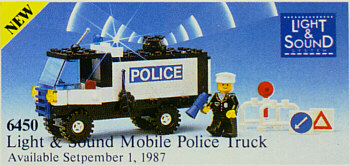
'85 on Bricklink, '86 on Brickset
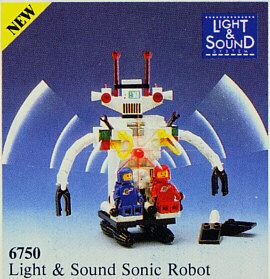
'87 on Bricklink, '86 on Brickset

Here's one with release dates ranging from '86-'88. After sleuthing around some pamphlets I've found a German reference to September '86 here. So, the release was staggered by about a year based on country.
While looking for a reference to 6783's actual date I found the Futuron font spelling FutureWorld; this is the Canadian pamphlet for 1988; note the french and English on the page.
In the end, it appears to be a matter of a staggered global release. Germany received their last wave of Classic Space sets in March 1987, after the three Classic Space electric sets appeared, putting them around winter '86/'87 Probably very late '86 as Christmas would have been an optimal time to hit the German toy market. Officially, the Lego company lists the Electronic Light and Sound product as an '86 product.
Futuron hit the German Market in August '87 and ended the Classic Space era for good.
Coincidentally it appears Black-tron released in America in April 1987 before all three of the Classic Space Light and Sound sets... let's just stop right there...global product logistics have changed over the years. Anyway; America got their first electric 9V sets in September '87.
Now that I'm done arguing with the Internet databases...
Hence I'm purporting this light brick to be an '87 piece for America...because I'm an American...but I was born in Germany, so I think what happened in Germany is worthy of discussion...this was an '86 piece in Germany
1987

As well as this light cover.
1987

A 1988 Futuron set would feature it again in green, but of course, this color was already available in Classic Space in '87

Here's the small stanchion. This part was designed to hold up the Monorail track and saw sporadic use through 2002.
1987

The larger stanchion would be somewhat more commonplace, but like the above stanchion it wouldn't appear in any sets after 2003. Since then I've come across this part in the Atlanta Lego Store pick a brick wall as recently as 2009.
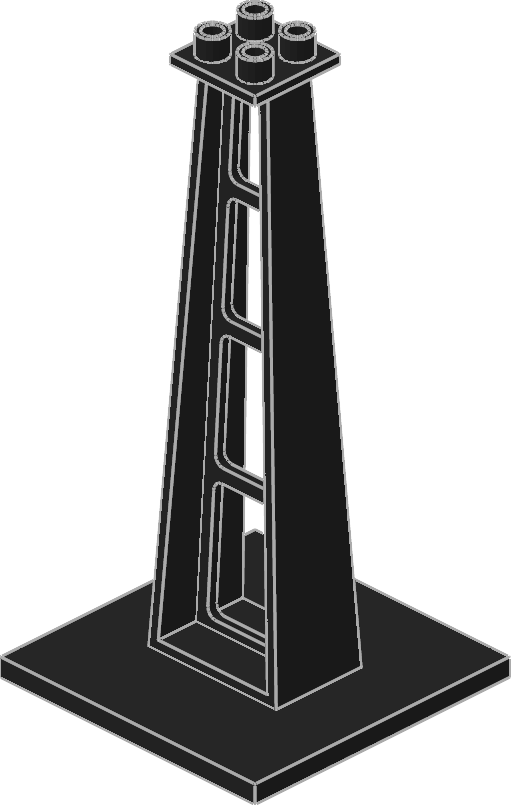
Finally, we come to the track pieces. I chose to show all of these together, since they make more sense as a unit. There were 5 Molds for the Monorail in the first model release.
1987
Curve
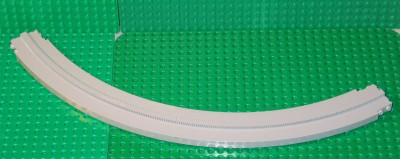
Bottom Slope
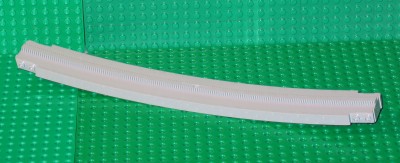
Top Slope
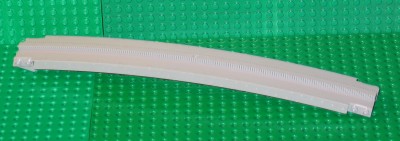
Straight
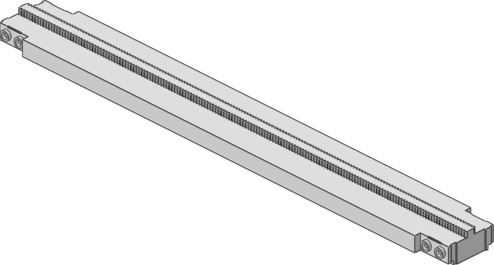
Switch
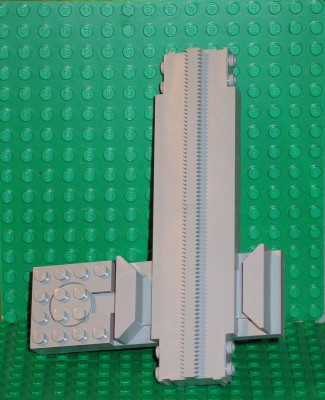
Some new Color Variants of existing pieces helped augment Futuron's offerings and expand the palette of existing options.
This axle plate from 1984 got a white variant in 1987 for Futuron
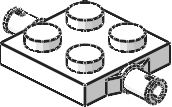
One Futuron set received this white variant of a 1981 hinge in 1987. This part was also available in a 2 sets from 1987's Classic Space line.

A white version of this hinge design from 1984 appeared in 1987.
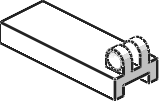
This white variant of the 1985 robot arm was a new addition for 1987

This 1984 prefab brick was made available in white in 1988
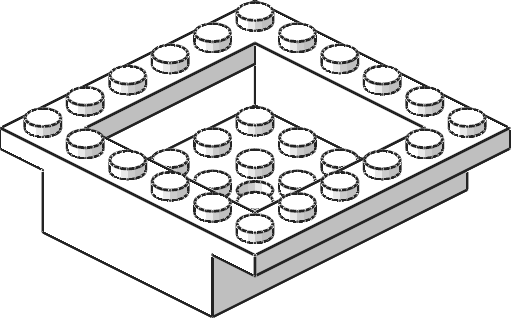
This white train signal stand was a 1988 piece, and a farewell to a gray train signal holder that first appeared in 1980.
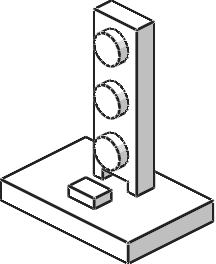
This 1985 part received a unique print in 1987 on a white panel tile
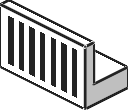
Here's a print from 1985 applied to a white slope version in 1987.
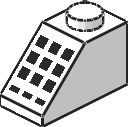
This print appeared on a unique black brick in 1987, but Futuron received a unique white variant in 1988
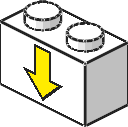
This 2x2 striped tile appeared in one of the Classic Space Light and sound sets...if you remember from up the page, those received a staggered global release, so in Germany, this would be an '86 piece, but for Americans this was all new in '87.
1987
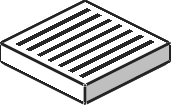
The generic Classic Space computer print from 1985 appeared on a white tile for the first time in 1987. It was first available in Futuron's 6884 Aero Module, as well as two of the Classic Space Sets, before appearing in waves two and three of Futuron in greater numbers.

Lego designers chopped the generic Classic Space computer Tile in half for 1987, and gave Futuron its own sort of unique computers.


A 1983 round tile received an arrow print in 1987 on old gray. The tile wouldn't be available in old gray without the print until 1990. This gray brick with arrow print only appeared in 6990 and a supplementary switch track pack. A slightly more common white variant would appear in 1991.

The theme was host to several new shirt prints. The design was an update of the old classic space Logo.
1987

1987
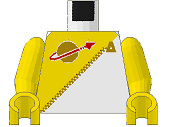
1987
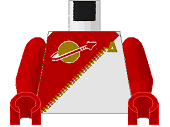
1988
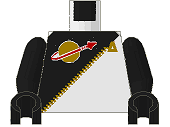
The transparent blue parts always get me jazzed. It's just a really great electric color.
This transparent blue pennant from 1987 was an exclusive color for 6990, but its mold dated back to 1979.

The ubiquitous 1 stud space cone from 1985 received a transparent blue variant in 1987. I'm somewhat surprised Classic Space didn't ever get this.

This panel from 1985 received a Transparent blue update in 1987.
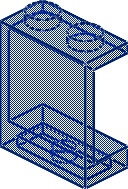
This hinge insert window was first released in 86, it showed up through 93, but it was slowly cycled out by an updated mold. The Transparent dark Blue color appeared in 1987, but it is very difficult to find, as there are no loose examples for sale as of this writing.
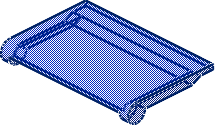
You are more likely to come across this other piece instead. This is what I have...I almost wonder if the smooth piece even exists...
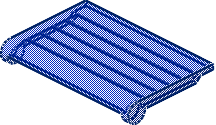
This space chair from 1984 received a black variant in 1987. Futuron's 6990 shared the color introduction with Black-Tron's 6954.
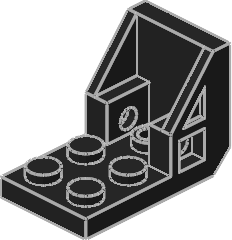
So, how'd I do, did I miss something, I'd be surprised if I didn't, but if you find something let me know and I'll update the post with credit given.
I really love the old Lego parts, and sometimes when it becomes obvious an old mold has been replaced, retired, or updated I get a bit cranky. I remember becoming livid when I realized the gray colors had been changed, and then saw that brown was changed as well. They looked so plasticky and rendered many of my early Star Wars sets, which were heavily gray, obsolete. That was the first time I started buying Lego sets on Ebay, grasping at the straws of nostalgia with action instead of words. I still buy new Lego sets sometimes, and the new stuff is legitimately great, but for me, the old shapes and colors are what I grew up with, and whether better or not, I love the vintage parts more, because I've desired them for my entire sentient life.








No comments:
Post a Comment